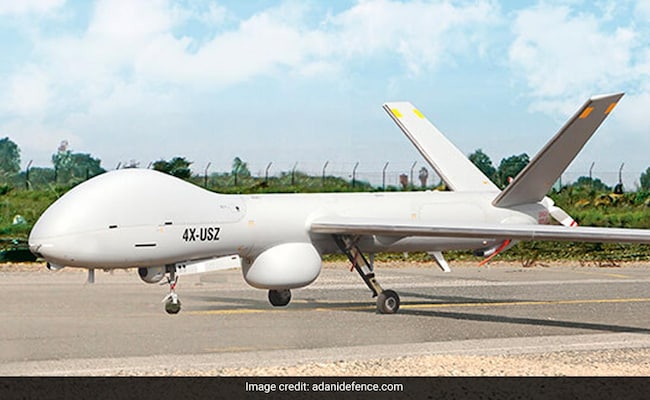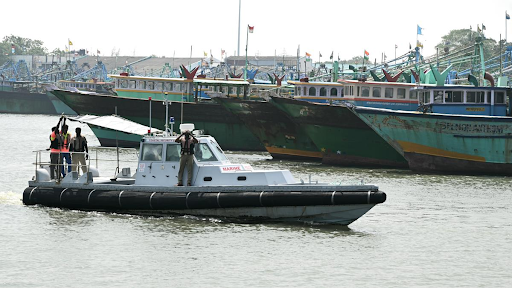Description

Disclaimer: Copyright infringement not intended.
Context
- The Drishti 10 Starliner Unmanned Aerial Vehicle (UAV), developed by Adani Defence and Aerospace, marks a significant milestone in India's pursuit of self-reliance in defense technology.
- Unveiled by Chief of Naval Staff, this indigenously manufactured UAV is designed as an advanced intelligence, surveillance, and reconnaissance (ISR) platform with medium altitude, long endurance capabilities.
Details
Key Features
- Endurance and Payload Capacity:
- Drishti 10 Starliner boasts an impressive 36 hours of endurance, enabling extended surveillance missions.
- It possesses a substantial 450 kg payload capacity, allowing for versatile mission capabilities.
- Medium Altitude, Long Endurance (MALE) Characteristics:
- As a Medium Altitude, Long Endurance (MALE) drone, Drishti 10 is optimized for operations at moderate altitudes, enhancing its surveillance capabilities over a wide area for extended durations.
- Certification and Airworthiness:
- The UAV is the only all-weather military platform certified with NATO's STANAG 4671, ensuring compliance with international standards.
- This certification permits it to operate in both segregated and unsegregated airspace, enhancing its flexibility in various operational scenarios.
Strategic Significance
- Naval Operations:
- It is set to play a pivotal role in safeguarding India's national maritime interests, particularly in the Indian Ocean region.
- Technological Advancements:
- Equipped with state-of-the-art sensors, advanced communication capabilities, and cutting-edge technologies, Drishti 10 signifies a leap forward in defense technology.
- Its introduction represents the Indian Navy's commitment to becoming a self-reliant force.

Introduction to UAVs
- Unmanned Aerial Vehicles (UAVs), commonly known as drones, are aircraft without a human pilot aboard.
- They can be remotely controlled or operate autonomously through onboard computers and advanced software.
Structure:
- Frame and Airframe: UAVs come in various sizes and shapes, with lightweight materials like carbon fiber and aluminum often used for their construction.
- Propulsion System: Electric motors or internal combustion engines power UAVs, depending on their size and intended use.
- Avionics: Advanced avionics systems include navigation, communication, and sensor technologies that enable autonomous flight and data collection.
Types of UAVs:
- Fixed-Wing UAVs: Resemble traditional airplanes and are efficient for covering large areas due to their endurance and range.
- Rotary-Wing UAVs: Feature rotating blades, offering vertical take-off and landing capabilities, suitable for hovering and close-range operations.
- Hybrid UAVs: Combine features of both fixed-wing and rotary-wing UAVs, providing versatility in mission profiles.
Scientific Principles of Flight:
- Aerodynamics: UAVs rely on principles of aerodynamics for lift, achieved through the shape and design of their wings or rotors.
- Propulsion: Propulsion systems generate thrust, with electric motors or combustion engines driving propellers or rotors.
- Navigation: Advanced navigation systems, including GPS and inertial sensors, enable precise control and positioning during flight.
Payloads and Sensors:
- Imaging Systems: UAVs commonly carry cameras, from visible spectrum to infrared and multispectral cameras, for various imaging applications.
- LiDAR and Radar: Light Detection and Ranging (LiDAR) and radar sensors enable accurate mapping, terrain modeling, and obstacle detection.
- Communication Systems: UAVs utilize communication systems for real-time data transmission to ground control stations.
Applications of UAVs:
- Agriculture: UAVs assist in crop monitoring, precision agriculture, and pest control through aerial surveys.
- Surveillance and Security: Military and law enforcement use UAVs for border surveillance, reconnaissance, and disaster response.
- Environmental Monitoring: UAVs contribute to environmental studies, wildlife monitoring, and disaster assessment.
- Infrastructure Inspection: UAVs inspect critical infrastructure such as pipelines, power lines, and bridges, providing cost-effective solutions.
Scientific Challenges and Research Areas:
- Autonomous Navigation: Advancements in autonomous navigation systems to enhance UAVs' ability to navigate complex environments.
- Energy Efficiency: Research focuses on developing lightweight materials and energy-efficient propulsion systems to extend UAV endurance.
- Collision Avoidance: Implementing sophisticated collision avoidance systems to enhance safety and reliability during autonomous operations.
Future Trends:
- Swarm Technology: Research in swarm technology to enable collaborative missions involving multiple UAVs.
- Artificial Intelligence: Integration of artificial intelligence for autonomous decision-making and adaptive mission planning.

Conclusion
The Drishti 10 Starliner UAV, with its Medium Altitude, Long Endurance characteristics, represents a remarkable achievement in India's defense capabilities, aligning with the nation's vision for self-reliance.
|
PRACTICE QUESTION
Q. Analyze the threats posed by weaponized drones to national security and recommend policy responses to counteract potential misuse. (250 Words)
|










